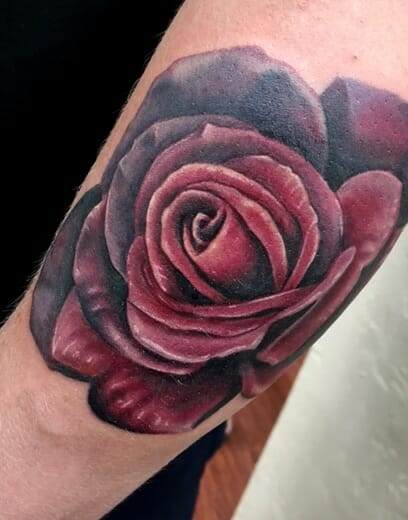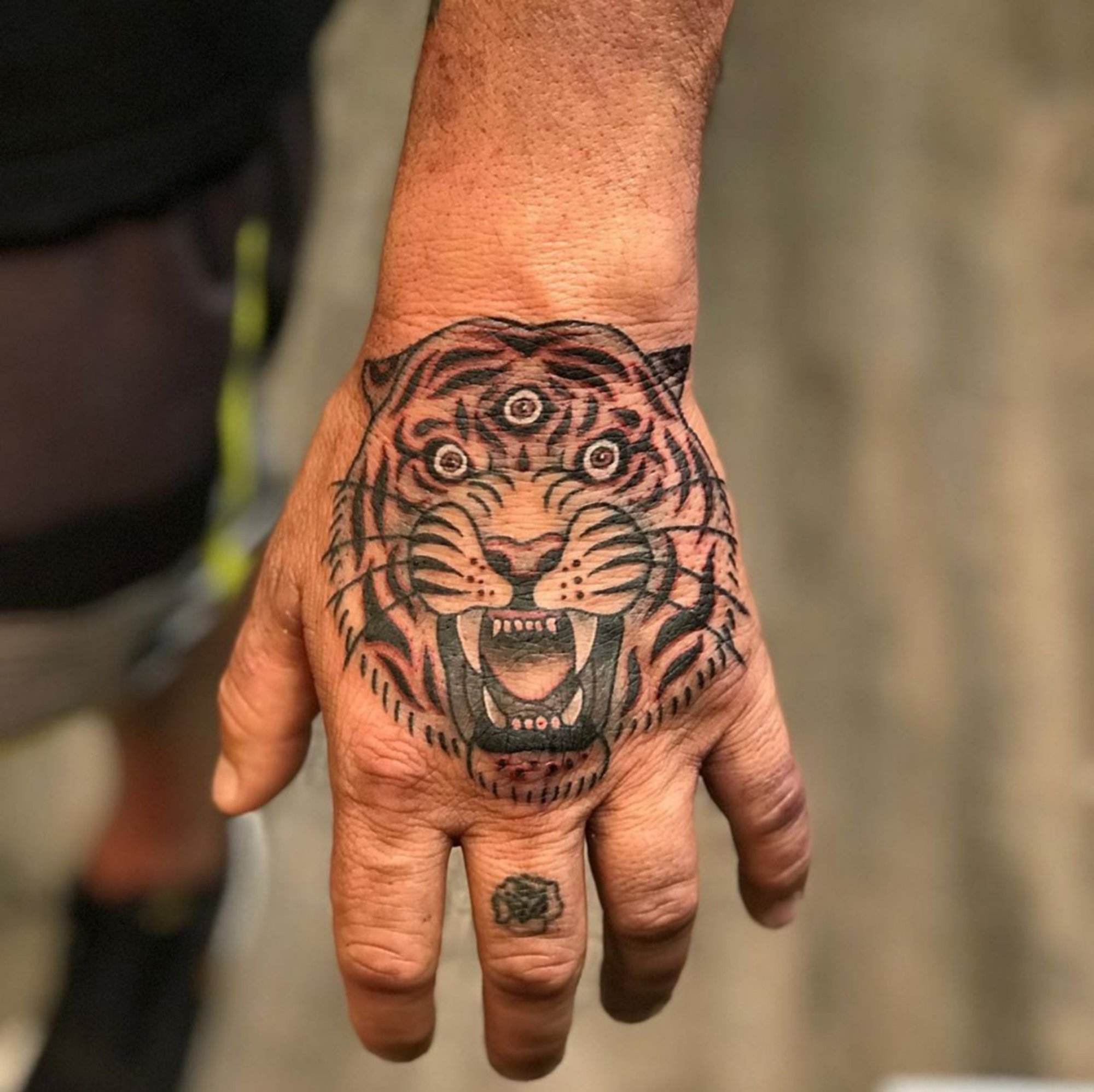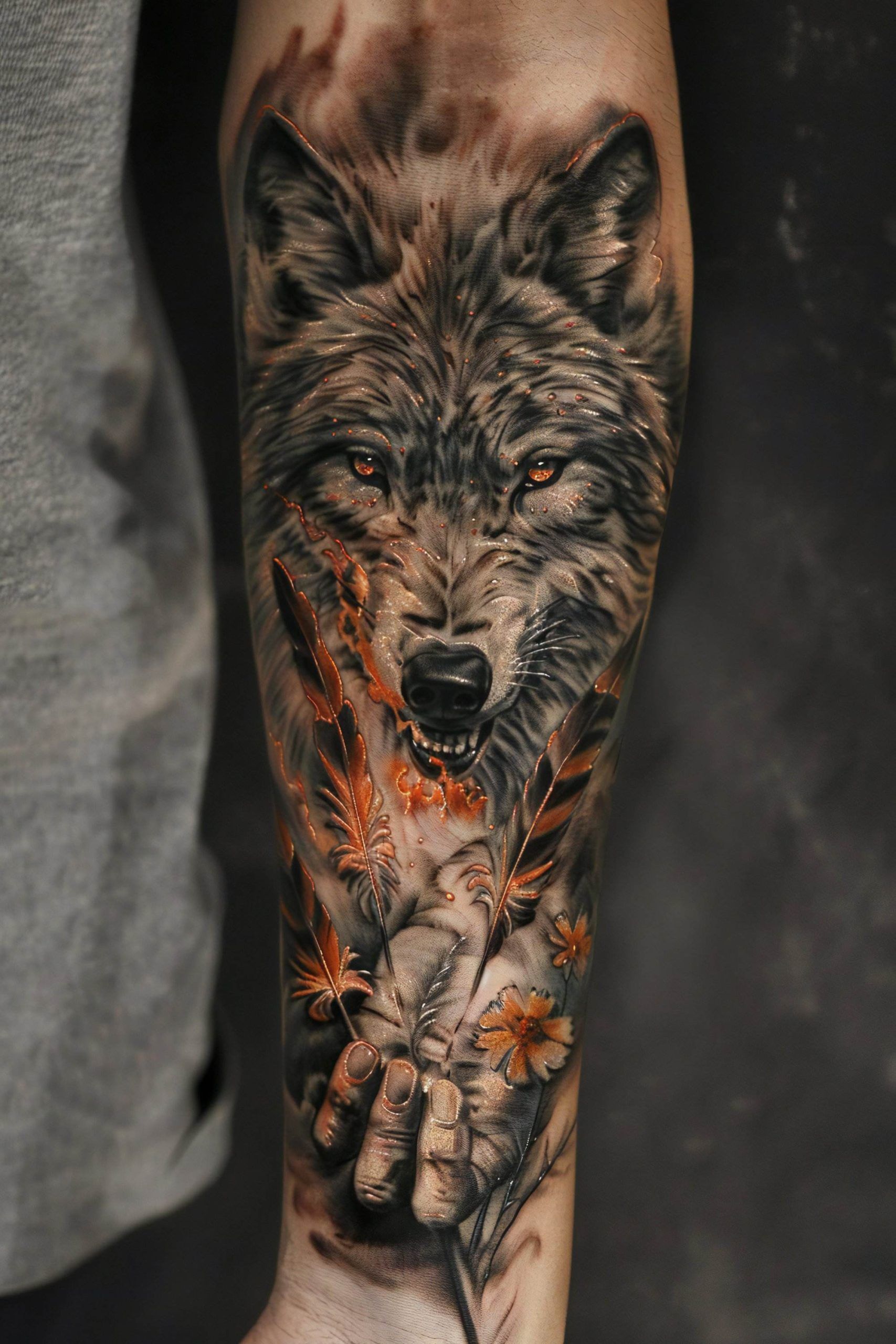Introduction
Brief History of Tattoos
Tattoos have a long-rooted history that stretches back thousands of years, offering a fascinating glimpse into the rituals and beliefs of ancient cultures. The earliest evidence of tattooing dates to around 3300 BCE, discovered on the naturally mummified body of Ötzi the Iceman in the Alps. His skin bore intricate patterns, suggesting that tattoos may have served not just as adornments, but also as forms of pain relief and protective symbols. Across various civilizations, tattoos have been present. In ancient Egypt, tattoos were often applied to women as a symbol of fertility and protection. Similarly, in Polynesian cultures, tattooing is an integral part of identity, with designs reflecting social status, lineage, and personal achievements. In medieval Europe, tattoos largely fell out of favor, associated with barbarism and the lower classes. However, they saw a resurgence during the Age of Exploration as sailors began adopting various tribal designs from around the world, marking their journeys and establishing connections with the customs of distant lands.
Evolution of Tattoo Symbolism
As tattooing practices evolved, so too did the meanings behind the designs. Initially, tattoos acted as sacred symbols, marking rites of passage or serving as talismans for protection. Today, they encompass a broader range of significances, often deeply personal to the individual wearing them. Some key aspects of tattoo symbolism include:
- Cultural Identity: Tattoos today often celebrate cultural heritage, with many people opting for designs that resonate with their ancestry. This can involve traditional styles, such as Maori or tribal motifs, celebrating one’s background and identity.
- Personal Expression: Modern tattoos are often seen as a canvas for personal storytelling. Individuals may choose designs that reflect their life experiences, personal beliefs, or important moments. For example, a person may select a quote from a cherished book or a symbol representing love, loss, or resilience.
- Artistry and Aesthetics: As tattoo art has advanced, so too has the appreciation for its artistic value. Many individuals choose tattoos for their beauty alone, often working closely with skilled artists to create unique, intricate designs that serve as artworks on their bodies.
- Trendy Inspirations: Popular culture has also influenced tattoo symbolism, with designs shifting to reflect contemporary trends. From minimalistic designs to intricate watercolor pieces, the range of inspirations is virtually limitless.
Tattoos today are not just ink on skin; they are a mosaic of stories, traditions, and personal significance. This art form continues to evolve, shaped by individual experiences and cultural shifts, creating a rich tapestry that connects the past with the present. As we explore various tattoo styles and symbols in further sections, it becomes clear how deeply interwoven they are with human culture and self-expression.
Traditional Tattoo Designs
Anchor Tattoos
Anchor tattoos hold a significant place in the world of traditional tattoo designs, primarily associated with maritime culture. Traditionally, they symbolize hope, stability, and a strong sense of grounding amidst life’s tempests. Sailors often wore these tattoos, believing that an anchor would keep them safe at sea, acting as a safeguard against perilous waters. For many, the anchor represents far more than just a sailor’s life; it symbolizes the importance of finding one’s grounding in a chaotic and unpredictable world. This meaning resonates with countless individuals who seek stability in their lives. Some popular designs include:
- Classic Anchor: Often depicted with ropes wrapped around it, this design appears simple yet powerful.
- Colored Anchors: With vibrant blues and reds, colored anchors can convey a more contemporary feel while maintaining traditional significance.
- Anchor with a Heart: Combining love with the symbolism of stability, this design represents both deep-seated love and steadfastness.
Many choose to adorn themselves with anchor tattoos as a reminder to stay anchored in their values and relationships, even when life’s storms threaten to overwhelm them. Their timeless appeal ensures that they remain a popular choice for many seeking meaningful body art.
Dagger Tattoos
Dagger tattoos are another iconic representation within traditional tattoo designs, often laden with rich symbolism and potent historical context. Unlike anchor tattoos, which mostly convey positive connotations, dagger tattoos can capture a duality of meaning that reflects both danger and protection. Historically, daggers have been symbols of both violence and defense. In the tattoo realm, they often represent the struggle between good and evil, courage in the face of adversity, and a reminder that one must sometimes fight for what they believe in. The intricacies of dagger tattoos can vary widely, including:
- Dagger Through a Heart: This is one of the most common motifs, portraying the pain of love and betrayal. It signifies that love can bring both joy and heartache.
- Bouquet with Dagger: Combining floral elements with a dagger, this design speaks to the beauty and pain that life can sometimes hold.
- Old School Dagger: Often crafted in a traditional style, these tattoos can evoke a sense of nostalgia and connection to the roots of tattoo art.
People frequently choose dagger tattoos to embody the complex layers of their experiences. These designs can serve as powerful reminders of battles fought, both internal and external. Whether it’s a personal struggle, a lost love, or a mark of resilience, dagger tattoos underscore the intricacies of human experience. In summary, traditional tattoo designs like anchor and dagger tattoos continue to resonate with individuals today, weaving together elements of history, culture, and personal narrative. As symbols evolve, they remain steadfast, grounding those who wear them and reminding us of life’s complexities.
Nature-Inspired Tattoos
Rose Tattoos
When it comes to nature-inspired tattoos, rose tattoos stand out not only for their beauty but also for their deep symbolism. Renowned for their elegance and complexity, roses can convey a myriad of meanings, including love, passion, and the intricate dance of beauty and pain. Each color of a rose can represent a different sentiment, which adds to the richness of this flower’s symbolism. For example:
- Red Roses: These are classic symbols of romantic love and passion, often chosen for commemorating a special relationship or lost love.
- Yellow Roses: Representing friendship and warmth, yellow roses often convey joy and the beauty of platonic connections.
- White Roses: These signify purity and innocence and are often seen in weddings, representing new beginnings.
Rose tattoos can be designed in various ways—from minimalist line art to intricate, photorealistic designs that showcase every petal. Some individuals opt for bold, colorful interpretations, while others may prefer more muted tones to evoke a vintage feel. A common motif is the combination of a rose with thorns or skulls, representing the duality of beauty and pain. This blend can resonate with those who have experienced the complexities of love and loss. People often choose rose tattoos to mark significant moments in their lives, such as celebrating milestones in relationships, paying tribute to someone influential, or representing personal growth.
Tree Tattoos
Transitioning from floral imagery, tree tattoos symbolize strength, growth, and a deep connection to nature. Much like roses, tree designs come with a rich tapestry of meanings, often symbolizing our roots, family, and connection to Earth. Different types of trees convey unique messages:
- Oak Trees: Representing strength and endurance, oak tree tattoos can signify resilience and stability, making them a favorite among individuals who value these traits.
- Willow Trees: Often associated with flexibility and emotional balance, willow tree tattoos can reflect adaptability in life’s challenges.
- Cherry Blossom Trees: These stunning blooms symbolize the transient nature of life, reminding wearers to appreciate the present moment, given their short blooming period.
Tree tattoos can vary significantly in design—from minimalist silhouettes to elaborate, sprawling branches that seem to reach toward the sky. Many choose a tree tattoo to depict their family tree, incorporating names or symbols that represent different family members. Additionally, tree tattoos can serve as an emblem of personal growth, illustrating one’s journey through life. The tattoo may signify overcoming hardships, much like how trees endure storms yet continue to grow and thrive. Nature-inspired tattoos like rose and tree designs speak to the human experience, grounding individuals with symbolism that resonates deeply. These tattoos transcend time and trends, offering an eternal connection to the beauty and complexity of life. Whether honoring relationships or celebrating personal growth, nature-inspired tattoos serve as a powerful representation of one’s journey and values.
Animal Tattoos
Wolf Tattoos
Animal tattoos have always held a special place in the realm of body art, and wolf tattoos are particularly compelling due to their rich symbolism and cultural significance. Wolves are often seen as powerful symbols of loyalty, teamwork, and intelligence—qualities that resonate deeply with many individuals. Throughout various cultures, wolves embody a strong connection to nature and serve as a reminder of our instincts and primal nature. For example:
- Loyalty and Family: Wolves are known for their strong pack mentality, which symbolizes loyalty not just to family but also to close friends. Many choose wolf tattoos as a tribute to their close connections.
- Intuition and Freedom: Wolves are revered for their independence and keen instincts, representing a free spirit unbound by societal conventions.
Designs of wolf tattoos can range from highly stylized versions to intricately detailed representations capturing the essence of these majestic creatures. Popular motifs might include:
- Howling Wolves: Often depicted against a backdrop of a full moon, howling wolf tattoos symbolize a call to the wilderness and a deeper connection to spiritual pathways.
- Wolf Pack: Showing wolves in a group highlights the importance of community and support, reflecting an appreciation for personal relationships.
Many individuals choose wolf tattoos during pivotal life stages, symbolizing a personal journey toward independence or a commitment to loyalty within their circle. Whether as a metaphorical anchor during challenging times or a celebration of one’s fierce independence, wolf tattoos continue to resonate strongly with those who wear them.
Lion Tattoos
Transitioning from wolves, lion tattoos embody a different yet equally powerful symbolism. Known as the “king of the jungle,” lions are often associated with strength, bravery, and nobility. They carry a regal presence that resonates deeply, making them a popular choice for tattoo enthusiasts. To many, lions represent not only physical strength but also courage in facing life’s adversities. Key meanings attributed to lion tattoos include:
- Leadership and Authority: Lions portray the ability to lead and inspire others, symbolizing empowerment and confidence in one’s abilities.
- Courage and Resilience: Lions exemplify the bravery needed to confront challenges, making their images a source of strength for individuals who find themselves in tough situations.
Lion tattoos can be incredibly versatile, drawing diverse interpretations and designs:
- Realistic Lion Portraits: Capturing the impressive features of a lion, these tattoos bring out the majestic beauty of the animal and often symbolize strength and leadership.
- Lion with a Crown: This design emphasizes authority and nobility, representing one’s aspirations to lead or achieve greatness.
Many opt for lion tattoos to mark significant life changes, showcasing a newfound strength or the realization of their potential. They can symbolize personal growth, serving as a reminder of one’s inner power during challenging times. Animal tattoos, such as those depicting wolves and lions, weave together narratives of strength, loyalty, and resilience. By choosing to embrace these powerful symbols, individuals not only celebrate the animal’s majesty but also reflect their personal stories and values, creating a lasting bond between tattoo and wearer. As these designs continue to inspire, they serve as timeless markers of human experience.
Cultural Tattoo Symbols
Maori Tattoos
Cultural tattoo symbols offer a rich tapestry of meanings that deeply connect to the identities and traditions of various peoples worldwide. Among the most powerful and visually striking examples are Maori tattoos, known as “ta moko.” These tattoos are significant in Maori culture and serve as an essential form of storytelling.
Understanding Ta Moko: Maori tattoos are imbued with spiritual significance and are traditionally applied using a chisel and colored pigments. Each design is unique to the individual, reflecting their genealogy, social status, and personal experiences. Key elements include:
- Patterns: Intricate spirals and curves symbolize different aspects of a person’s life and lineage. Each toki (chisel) in the tattooing process tells a unique story about the individual’s heritage.
- Facial Tattoos: In Maori culture, facial tattoos represent mana (authority, spiritual power) and a person’s connection to their ancestors. They denote status and community standing, often illustrating important milestones.
People often find a deep connection to Maori tattoos, embracing them as a way to express pride in heritage or commemorate significant life events. For many, wearing such tattoos is a profound declaration of identity and respect for one’s ancestors. However, it’s important to approach this practice with understanding and reverence. Engaging with the culture behind ta moko allows individuals to appreciate the significance and richness of the art form, creating a bridge between tradition and personal expression.
Hamsa Tattoos
Moving from the Maori tradition, Hamsa tattoos originate in Middle Eastern and North African cultures and carry significant protective meanings. The Hamsa, also known as the Hand of Fatima or the Hand of Miriam, is a symbol of protection against the evil eye and negative energies. Symbolic Meaning: The Hamsa design typically features an open hand, often with intricate patterns or symbols incorporated. The meanings associated with Hamsa tattoos include:
- Protection: The primary function of the Hamsa is as a talisman for protection, guarding the wearer from harm and misfortune.
- Fertility and Good Fortune: Many regard the Hamsa as a symbol of blessing, fertility, and prosperity, making it popular among those seeking positive energy in their lives.
Hamsa tattoos can possess striking aesthetic qualities, combining artistry with spiritual significance. Designs might feature embellished palms that draw from traditional patterns or incorporate elements like eyes and mandalas to enhance their protective meanings. People often choose Hamsa tattoos as an emblem of hope, security, and wellness. The design serves as a daily reminder of strength and fortitude in overcoming life’s challenges while remaining connected to cultural roots. Wearing a Hamsa can foster a sense of peace, reminding individuals that they are protected in a world filled with uncertainties. In summary, cultural tattoo symbols like Maori tattoos and Hamsa tattoos weave intricate narratives of heritage, protection, and identity. Both styles reflect deep connections to their respective cultures, emphasizing the importance of respect and understanding when embracing these designs. Whether marking significant milestones, celebrating connections, or invoking protection, cultural tattoos serve as enduring symbols of human experience and artistic expression.








